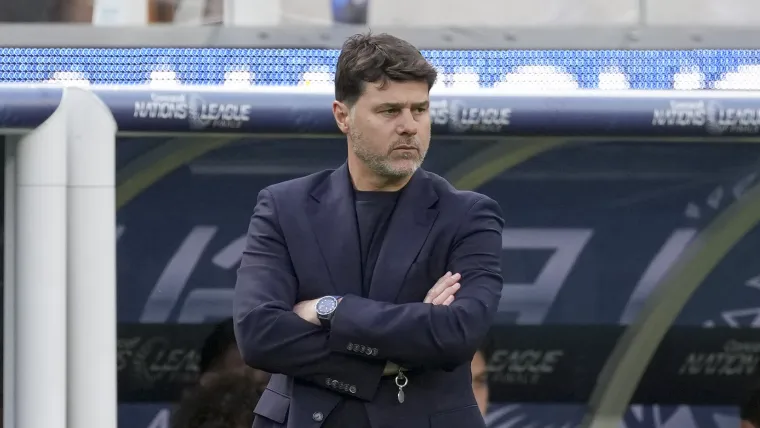As the countdown to the 2026 FIFA World Cup on home soil intensifies, the United States Men`s National Team finds itself at a pivotal juncture. Manager Mauricio Pochettino has unveiled his latest roster for the upcoming September international friendlies against South Korea and Japan, sparking considerable discussion among fans and pundits alike. The squad announcement is more than just a list of names; it`s a strategic declaration, revealing Pochettino`s evolving philosophy as he meticulously crafts a team capable of contending on the global stage.
The Return of a Star, The Absence of Stalwarts
The headline news undoubtedly involves the return of talismanic winger Christian Pulisic. After opting for a well-deserved rest during the Gold Cup, Pulisic`s presence signals a potent offensive boost, reassuring supporters of his commitment to the national cause. His blend of pace, dribbling, and clinical finishing remains indispensable for the USMNT`s attacking ambitions.
However, the roster is equally defined by its surprising exclusions. Midfield engine Weston McKennie, a fixture in recent camps, was notably absent. Pochettino addressed this directly, stating his familiarity with McKennie`s capabilities and citing a “disjointed preseason” due to Club World Cup duties with Juventus. Similarly, promising forward Folarin Balogun also missed the cut, with Josh Sargent earning a recall. These decisions, while perhaps tactical, send a clear message: no player`s spot is guaranteed, regardless of past contributions or club stature.
Even the goalkeeping department reflects this shake-up, with regulars Matt Turner and Zack Steffen making way for Matt Freese (the sole keeper with a senior cap) and two uncapped players. It seems Pochettino is not merely tinkering; he`s conducting a comprehensive audit of the entire player pool.
Pochettino`s Calculated Philosophy: A 65-Player Roster?
Pochettino`s approach, as articulated, borders on the surgical. He revealed a working roster of “65 players that we`re going to be assessing every week,” emphasizing the importance of individual situations and a “good balance” within the squad. This isn`t merely about finding the best eleven; it`s about optimizing a deep pool, preparing for every contingency, and fostering internal competition.
“For me, all the players are important. The individual situations are important, and to analyze and make the decisions and have a plan for them… it`s for them to perform and for us to select the best players to make a roster with a good balance.”
This systematic review, though understandable given the short timeline since his appointment last October, raises questions. Is this rigorous experimentation a strategic masterstroke designed to unearth hidden talents, or a potential hindrance to developing crucial team chemistry with merely 289 days until the World Cup opener? The fine line between thoroughness and overthinking is indeed a narrow one.
The New Guard and The Returning Vets: A Blended Approach
The roster features an intriguing mix of seasoned veterans and hungry newcomers. Players like Sergiño Dest, returning from an ACL injury and showcasing renewed form with PSV, offer a vital dynamic to the fullback position. His ability to push high and combine with wingers like Pulisic or Tim Weah could unlock new attacking avenues.
However, the emphasis is clearly on expanding the talent pool. Four players could earn their first senior caps, and nine have fewer than ten. This influx includes promising names such as Sebastian Berhalter and Luca De La Torre, signalling a concerted effort to stress-test emerging talent against high-calibre international opposition. For these players, every minute on the pitch is an audition, a chance to solidify their claim for a permanent spot in a squad that feels perpetually in flux.
The Ticking Clock: Chemistry or Auditions?
With only six players from the 2022 World Cup squad making this September roster, the notion of a settled “core” seems distant. While continuity is provided by key figures like Tyler Adams, Tim Ream, and Chris Richards, the constant rotation, particularly in crucial areas, presents a significant challenge for developing cohesive play. The beautiful game often hinges on instinctive understanding, something built through repetitive training and consistent lineups.
Pochettino`s assertion that this window is the “last chance to dig deep into the player pool” suggests a shift might be imminent. The October friendlies against Ecuador and Australia, closer still to the World Cup, will likely provide a clearer indication of the manager`s preferred starting XI and core squad. For now, however, the September friendlies are less about seamless team play and more about individual assessments under pressure.
Conclusion: A High-Stakes Development Phase
Mauricio Pochettino`s latest USMNT roster is a fascinating study in strategic management. It`s a calculated gamble, prioritizing a comprehensive evaluation of talent over immediate team cohesion, all under the looming shadow of a home World Cup. While the exclusions may raise eyebrows and the constant rotation might test the patience of even the most ardent supporters, Pochettino`s methodical approach is undeniable. The coming months will determine whether this exhaustive talent search culminates in a unified, formidable squad ready to make a statement in 2026, or if the quest for options ultimately diluted the collective strength. One thing is certain: the road to the World Cup promises to be anything but predictable for the USMNT.

